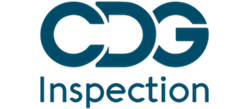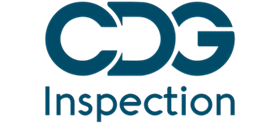Introduction:
In the highly regulated world of pharmaceuticals, biotechnology, and the broader healthcare industry, adherence to Good Manufacturing Practices (GMP) is paramount. GMP ensures that products are consistently produced and controlled according to quality standards, minimizing risks to consumers’ health and ensuring the integrity of the products. CDG Inspection Limited is a renowned organization that conducts GMP audits to help companies meet these stringent standards. This article delves into CDG Inspection Limited’s GMP audit checklist and offers guidance on preparing for certification success.
Understanding CDG Inspection Limited
Who is CDG Inspection Limited?
CDG Inspection Limited is a globally recognized organization specializing in regulatory compliance and quality assurance services. They work with pharmaceutical, biotechnology, and medical device companies to ensure their products meet international GMP and regulatory requirements. CDG Inspection Limited conducts comprehensive audits to assess compliance and help organizations maintain the highest quality standards.
The Importance of GMP Certification
GMP certification is vital for pharmaceutical and healthcare companies for several reasons:
- Legal Requirement: Many countries require GMP compliance to manufacture and distribute pharmaceutical products legally.
- Patient Safety: GMP adherence ensures the safety and efficacy of healthcare products, safeguarding patient health.
- Quality Assurance: GMP certification enhances a company’s reputation by demonstrating a commitment to quality and safety.
- Market Access: GMP certification is often a prerequisite to accessing international markets, expanding a company’s global reach.
CDG Inspection Limited’s GMP Audit Checklist
CDG Inspection Limited follows a comprehensive GMP audit checklist to evaluate an organization’s compliance with GMP standards. This checklist covers various aspects of manufacturing, quality control, and documentation. To prepare for certification success, it is crucial to understand and address each component of the checklist:
1. Facility and Equipment
- Facility Layout and Design: Ensure your facility is designed to prevent contamination and cross-contamination, with proper segregation of manufacturing and storage areas.
- Equipment Validation: Verify that all equipment used in manufacturing and quality control processes is validated and regularly maintained.
- Cleaning and Sanitization: Develop and implement cleaning and sanitization procedures for equipment and facilities to prevent contamination.
2. Personnel
- Training and Qualification: Ensure all personnel are adequately trained and qualified to perform their assigned tasks.
- Hygiene and Gowning: Enforce strict hygiene and gowning practices to minimize the risk of contamination.
3. Raw Materials and Suppliers
- Supplier Qualification: Assess and qualify suppliers to ensure the quality and consistency of raw materials.
- Raw Material Testing: Establish procedures for testing and approving raw materials before use in production.
4. Production Process
- Batch Records: Maintain accurate and detailed batch records for every production run, including documentation of deviations and changes.
- Process Validation: Validate manufacturing processes to ensure product consistency and quality.
- In-Process Controls: Implement in-process controls to monitor critical process parameters during production.
5. Quality Control and Testing
- Laboratory Testing: Ensure the accuracy and reliability of laboratory test results by validating analytical methods and maintaining calibrated equipment.
- Stability Testing: Conduct stability studies to determine product shelf-life and storage conditions.
- Out-of-Specification (OOS) Investigations: Develop procedures for investigating and addressing OOS test results.
6. Documentation and Records
- Document Control: Establish a robust document control system to manage and maintain GMP-related documents.
- Change Control: Implement a change control process to manage changes to processes, equipment, and facilities.
7. Complaints and Recall Procedures
- Complaint Handling: Develop procedures for handling and investigating customer complaints related to product quality.
- Product Recall: Establish a recall procedure in case a product defect or safety concern arises.
8. Quality Management System (QMS)
- Quality Policy and Objectives: Define a quality policy and set quality objectives that align with GMP principles.
- Management Responsibility: Ensure top management’s commitment to the QMS and GMP compliance.
9. Regulatory Compliance
- GMP Regulations: Stay updated with the latest GMP regulations in your region and globally.
- Regulatory Inspections: Prepare for and cooperate with regulatory inspections, including those conducted by agencies like the FDA or EMA.
Preparing for Certification Success
Now that we’ve covered the key elements of CDG Inspection Limited’s GMP audit checklist, let’s discuss how to prepare for certification success:
1. GMP Gap Assessment
Conduct an internal gap assessment to identify areas where your organization may fall short of GMP requirements. Address these gaps systematically to bring your operations into compliance.
2. Document Review and Control
Ensure that all GMP-related documents are organized, up-to-date, and easily accessible. Implement a document control system to manage revisions and ensure employees have access to the latest versions.
3. Training and Education
Invest in continuous training and education for your staff. Ensure that every employee understands their role in maintaining GMP compliance.
4. Quality Management System
Review and refine your Quality Management System (QMS) to align with GMP principles. Ensure that it is well-documented and fully integrated into your operations.
5. Mock Audits
Conduct mock audits or hire third-party consultants to simulate GMP audits. These practice runs can help identify weaknesses and areas needing improvement.
6. Supplier Management
Strengthen your supplier qualification and management processes to guarantee the quality of raw materials and components.
7. Corrective and Preventive Actions (CAPA)
Implement a robust CAPA system to address non-conformities and prevent their recurrence. Track and document all CAPA activities.
8. Risk Assessment
Perform a risk assessment of your operations to identify critical control points and potential vulnerabilities. Develop strategies to mitigate these risks.
9. Regulatory Affairs
Stay informed about evolving GMP regulations and make compliance a top priority. Engage with regulatory agencies proactively to address concerns and questions.
10. Continuous Improvement
Establish a culture of continuous improvement within your organization. Encourage employees to identify and report areas for enhancement, and implement these improvements systematically.
Conclusion:
Achieving GMP certification from CDG Inspection Limited is a significant milestone for any pharmaceutical or healthcare company. It demonstrates a commitment to producing safe, high-quality products that meet international standards. To prepare for certification success, organizations must diligently follow CDG Inspection Limited’s GMP audit checklist, address any compliance gaps, and foster a culture of quality and continuous improvement. By doing so, they can not only attain GMP certification but also maintain it, ensuring the ongoing safety and efficacy of their products in a highly regulated industry.






Your article helped me a lot, is there any more related content? Thanks!
Thanks for sharing. I read many of your blog posts, cool, your blog is very good.